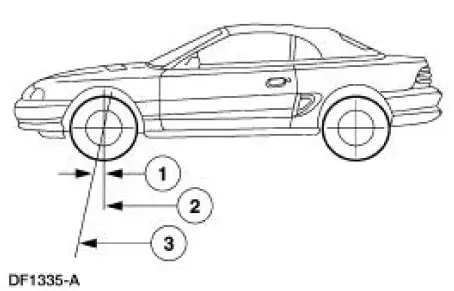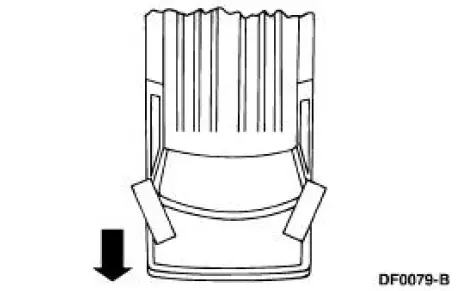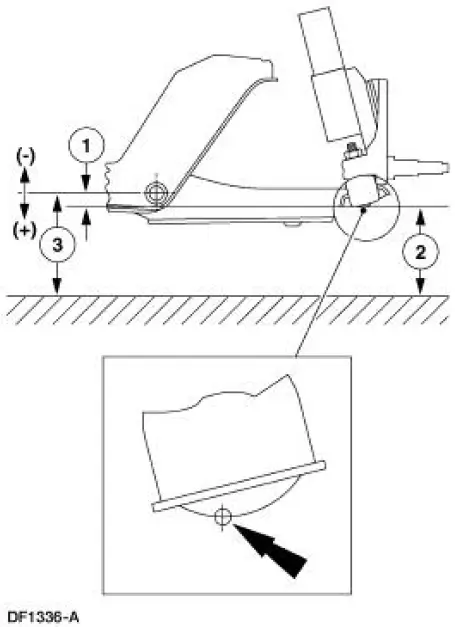Ford Mustang (1999-2004) Service Manual: Negative and Positive Camber

Camber is the vertical tilt of the wheel (1007) when viewed from the front. Camber can be positive or negative and has a direct effect on tire wear.
Caster

| Item | Part Number | Description |
| 1 | - | Positive caster |
| 2 | - | True vertical |
| 3 | - | Steering axis |
Caster is the deviation from vertical of an imaginary line drawn through the ball joints when viewed from the side. Caster specifications in this section will give the vehicle the best directional stability characteristics when loaded and driven. Caster setting is not related to tire wear.
Toe
Positive Toe (Toe In)

Negative Toe (Toe Out)

The vehicle toe setting affects tire wear and directional stability.
Ride Height
Front Ride Height Measurement

| Item | Description |
| 1 | Ride height = B - A |
| 2 | Measurement A |
| 3 | Measurement B |
 Wheel Alignment Angles
Wheel Alignment Angles
Camber and toe are adjustable on the front suspension systems. Front camber
is adjusted by moving
the top of the strut and spring assembly. Rear camber is adjusted by means of
eccentric cams on the
...
 Rear Ride Height Measurement - GT and Base
Rear Ride Height Measurement - GT and Base
Item
Description
1
Body reinforcement
2
Ride height (shortest distance)
3
Rear axle
Wheel Track
Item
Part Number
Description
1
-
Front track
...
Other materials:
Seats (Diagnosis and Testing)
Refer to Wiring Diagrams Cell 120 , Power Seats for schematic and
connector information.
Refer to Wiring Diagrams Cell 122 , Power Lumbar Seats for schematic and
connector information.
Special Tool(s)
73 III Automotive Meter
105-R0057
In ...
Navigation controls
Type 1
WARNING: Driving while distracted can result in loss of vehicle
control, crash and injury. We strongly recommend that you use
extreme caution when using any device that may take your focus off
the road. Your primary responsibility is the safe operation ...
Camshaft Runout
Special Tool(s)
Dial Indicator Gauge with
Holding Fixture
100-002 (TOOL-4201-C) or
equivalent
1. NOTE: Camshaft journals must be within specifications before
checking runout.
Use a Dial Indicator Gauge with Holding Fixture to measure the ...
